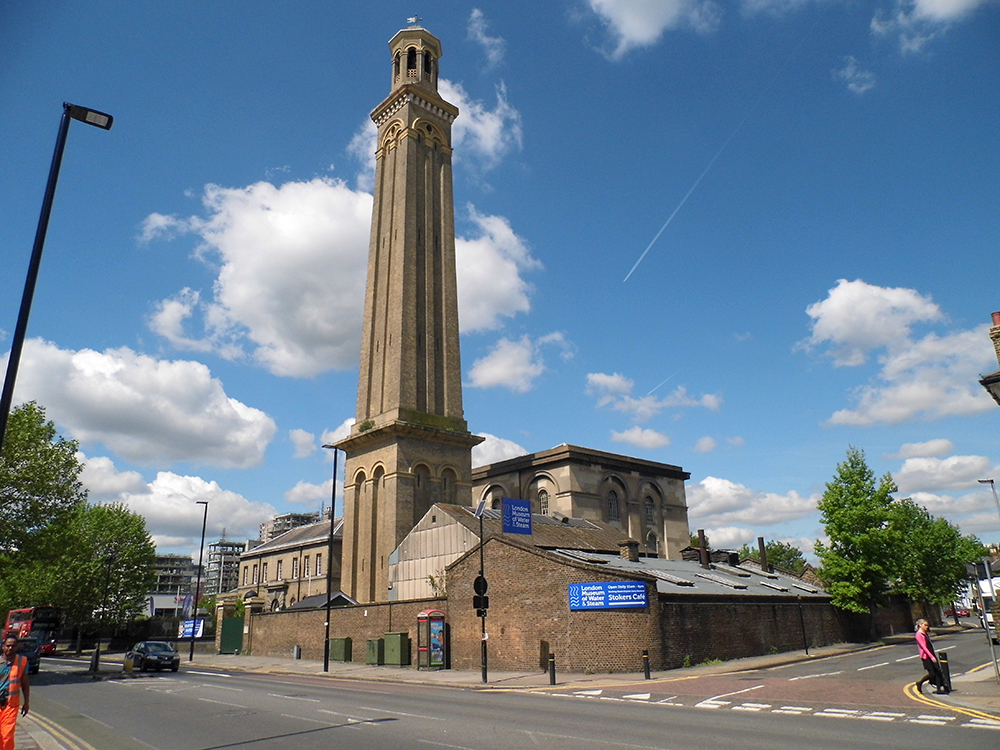On a recent trip to England I visited a number of attractions for children in or around the London. Two of them were the modern style of themed parks, Legoland and Kidzania, which have a range of highly interactive activities and rides that are free once you pay the entrance fee. They seem to be modelled on the Disneyland model in this regard.
I also went to more conventional London Museum of Water and Steam, which is in the old water pumping station on the banks of the Thames, at Kew, which was built in 1820. This has the 19th century pumps and engines one display - including a minature steam train looking not unlike Thomas the Tank Engine. It is made interesting for children with some interactive explanations of what they are seeing.
Finally we went to Regent’s Park Zoo, which doesn’t really need to do very much to please most kids and parents other than show us the animals but, presumably, in order to keep the eco-warriors at bay has reinvented itself as sort of environmentalist educational park (a veneer that can be ignored if it doesn’t interest you).
First Legoland. I was struck by just how exciting and entertaining these places are for kids aged 5 - 10. Legoland is a large permanent open-air fairground on a hill overlooking Windsor castle, and so presumably the Queen can see it from her bedroom window if she cares to look in that direction. It is so popular and that it has a hotel onsite, made out of real bricks…I think. Pretty much everything else in the place is made out of Lego. The general idea seems to be that three are a range of fairground rides - a ghost train, rollercoaster, a merry-go-round, a boat on artificially created rapids etc - in which we are all strapped in for safety and then has applied to it some theme from popular culture. The themes are chosen to tap into whatever is running high in kids popular culture at the time. So that might be the latest Disney hit, or anything to do with pirates, princesses or fairy tales. Then they make a string of giant Lego models on that theme, perhaps have some of them waving their arms mechanically, and open the doors for business. And boy, does this work as a business model. Thousands and thousands attend.
This shows the power of the anything that stimulates the imagination. These children are transported in their imaginations and they love it. The fact that the imaginary world is so obviously recreated by images made out of plastic bricks, does not put them off, rather it seems to attract them even more. They are thrilled by the Lego sculptures and, it seems to me, by the way it stimulates their natural facility for seeing prototypes when presented with images. To my mind, the fact that Legoland stimulates this so powerfully is what is the attraction. It’s not just themes, its the fact that there are images of the themes! This is the way of thinking that St Thomas describes in his 4th ‘proof’ of God and which he says is the most powerful way of evengelizing of all his proofs.
As I describe in a previous blog post, 4th-Way evangelization is a method underutilized by Christians today. The Lego company understood the power of this, even if Christians today haven’t, and have made a spectacular business success out of it. (So striking is Lego’s skill at doing this that one wonders if some secret Thomist has finally stumbled upon a commercial application for all those years studying the Summa and medieval philosophy. About time!) Christians should learn to tap into the same power. We could create something, perhaps, that without necessarily being explicitly Christian taps into the themes of Salvation History which are hardwired into us. The McDisneyland aesthetic of the Legoland is not great but this is not a necessary component of what is on offer - it just says to me that there is a place for something even more powerful if we wanted to provide it. Whoever does this successfully will corner the market!
We do not need compete directly with Legoland (I don’t see that it is doing anything bad). They are so good at what they do, we might choose instead to observe how they tap into this natural facility in mankind and then build on what they do further the Faith. People whose imagination is stimulated so powerfully will respond even more powerfully to more explicitly Christian themes if presented well in a Christian context, such as the liturgy.
Kidzania is an indoor facility in West London which uses a similar psychological device to draw people in. Rather than transporting us to imaginary worlds for pure entertainment (with perhaps some incidental moral message) as Legoland does, Kidzania presents the world of adult work to children as an exciting place to which they can aspire. They can become for about twenty minutes at a time, airline pilots, air crew, policemen, window cleaners, cooks, firement, paramedics in an ambulance. Typically, an instructor firefighter welcomes them to the activity classroom. The door is shut and parents are excluded. They can’t hear what is said so are trusting that what they are told is good - we watch them through a glass screen. The children put on a fireman’s hat and in conjunction with a video are told about this profession. Then they are told that there is an emergency to attend to. They are ushered into something like a golf cart that is made look like fire engine. They go to the scene of the accident and douse the fire with hoses spouting real water. As a result of this ‘work’, they earn 12 Kidzania pound notes.
The moral message is more apparent here than the Lego experience. The goal is to introduce the idea of work to them and make it seem worthwhile. Again, what is fascinating is how exciting they make this by utilizing the imaginations of the children to connect them to the reality they portray.
The last two places - the Museum of Water and Steam, and London Zoo - were more of what you would expect and much more interesting to me. The beauty and grace-in-motion of the old pump engines and even the elegance of the pumphouse (made in harmonic proportions of course) caught my eye. Interestingly, it was the rides and the interactive models, that seemed to me to be incidental to the main attraction, that the children were most interested in.
The latter two attractions offered an experience of something which was not using imagery but presenting us with directly with something real. The children were thrilled to be at both of these places too and enjoyed what was on offer, whether it was a steam engine, tropical butterflies, gorillas, giraffes or penguins.
The tendency of the more culturally conservative, such as myself, would be to argue that the higher, nobler, experience for the children is that in which they relate to the reality directly. But, now I’m not so sure. As I have pointed out in the past, the stimulation of imagination and the ability to relate the image to the prototype is almost universally necessary for one to have faith in God. Moreover, for all the beauty of the animals, we will not see them as God’s creatures unless we have that capacity for awe and wonder and the power of imagination to connect an image to prototype, and creature to Creator. So, in fact, London Zoo needs a Legoland if it is to avoid being a neo-pagan, eco-warrior homage to Nature, rather than an authentic glorification of the Creator.
Perhaps Legoland and Kidzania are onto something profound here!










